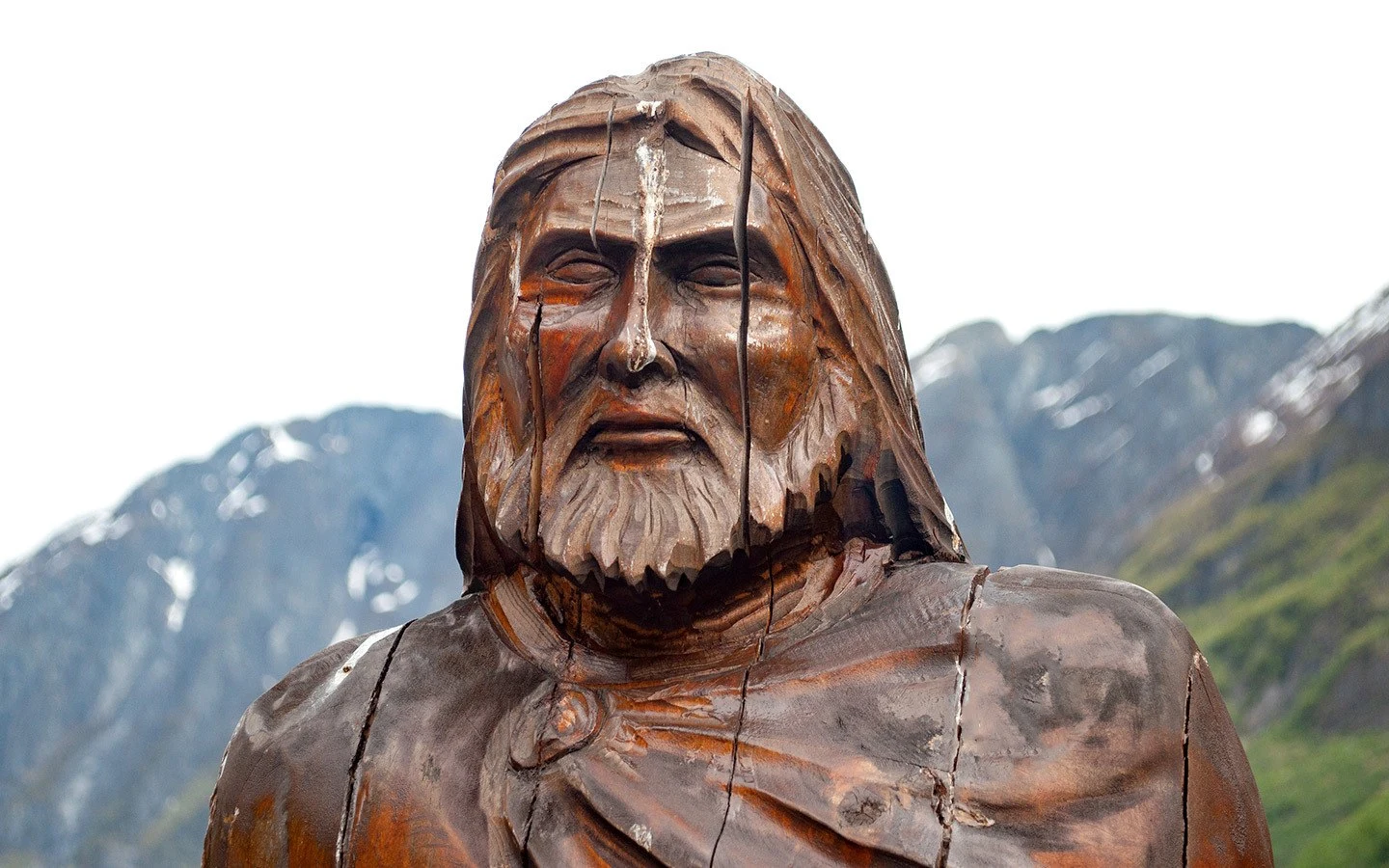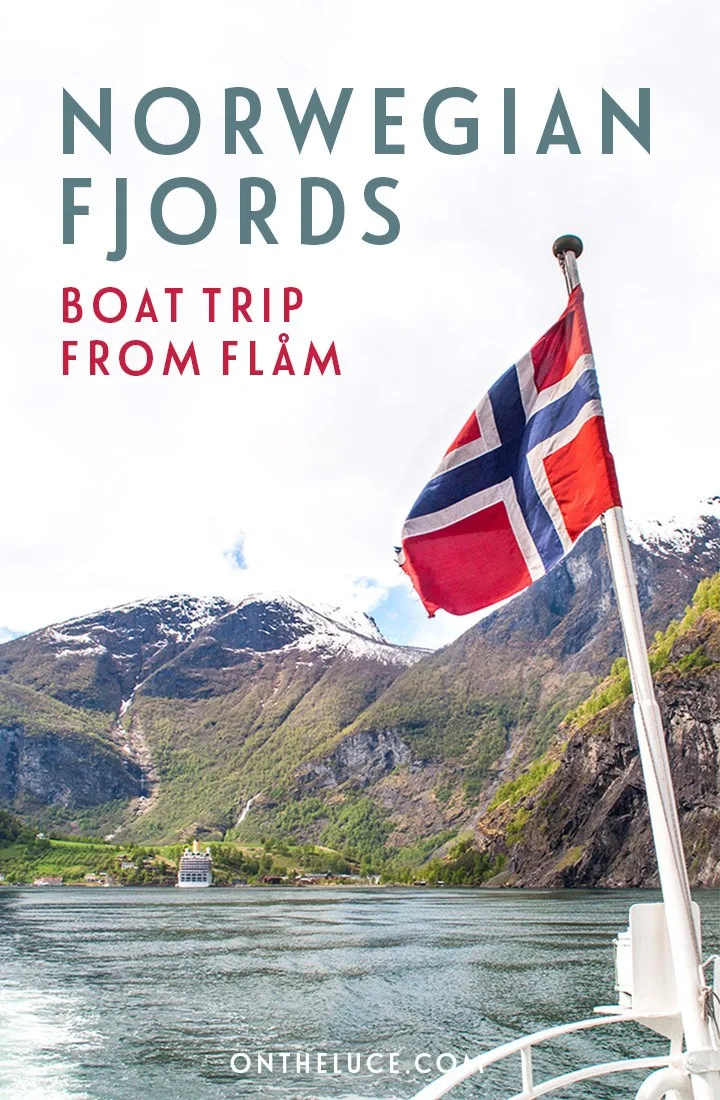
It’s Norway’s longest fjord, has been ranked as one of the world’s most beautiful fjord landscapes and is listed as a UNESCO World Heritage site. The Sognefjord comes with a whole lot of superlatives and even more expectations, but it doesn’t disappoint. We already had a sneak preview of its stunning scenery when we arrived at the fjordside village of Flåm, but to explore it properly you need to get out on the water. We decided one a two-hour fjord boat trip from Flåm to Gudvangen which takes you along two different branches of the Sognefjord – starting from the Aurlandsfjord and going through to the end of the Nærøyfjord.
Read more: The Flåm Railway: Norway’s most scenic train journey

Sailing out along the Aurlandsfjord
A boat trip through the fjords from Flåm
The landscapes in this part of Norway are just immense. The scale of the mountains and the width of the fjords dwarfs everything. Boats are just specks in the distance and even a fjord cruise ship coming in to dock looks like a toy boat. There are endless shades of green everywhere you look, with flashes of red from the wooden buildings along the waterfront and white from the waterfalls cascading down the cliffs. You might even spot a porpoise or a harbour seal in the water if you can drag your eyes down for long enough.

Villages along the banks of the Sognefjord
The fjord’s shoreline is dotted with farms, mainly producing goats’ cheese using the same traditional farming methods which have been used here for centuries. One of the most famous villages for cheese is Undredal, which has 100 residents and four times as many goats. Many of the farms are located on the water’s edge, in little hamlets you can only get to by boat. You can’t help thinking what it must be like to live here – to be in the middle of such a popular and well-visited part of the world, but still be so remote.

Fjord waterfalls
The most inaccessible of them all is the farm at Stigen. This is built way up on the mountainside, 300 metres above sea level. The only way to get up there is via a narrow, winding path that’s been cut into the cliffside. Although that’s an improvement on a few hundred years ago when there was just a ladder. The farm gets its name from the Norwegian word for ladder, and the story goes that if the farmer ever got any unwelcome visitors – like the sheriff coming to collect his taxes – then he’d just pull the ladder up.

Red wooden houses along the fjordside
As we sailed on, an almost vertical rocky mountain at Britelen marked the point where the two branches of the Sognefjord split. This is where you leave Aurlandsfjord and move into the Nærøyfjord. One of the villages along this stretch of water is Styvi. It started life as a farming village, but in the 1600s it was made the terminus of Norway’s Royal Post Road – the Kongevegen. Back then if you were transporting post through the fjords you could travel as far as Styvi by road, then you had to get into a boat and row the next 48 kilometres as far as Lærdal. Styvi’s still got its own post office – the smallest still in operation in Norway.

Rocky mountains and endless shades of green
At this point the walls of the Nærøyfjord start to get closer and closer, and it reaches its narrowest point around the hamlet of Bakka. Here the gap is only 250 metres wide and water is as little as 12 metres deep. The steep sides tower above you and it’s hard to imagine those huge cruise ships fitting through this stretch of water without scraping the sides. Bakka’s one of the oldest settlements along the fjord and has a pretty white traditional Norwegian wooden stave church. The church was built in 1859 and can seat up to 200 people – though with only 100 people living in the parish now it can’t be full very often.

The fjordside hamlet of Bakka
At far end of the Nærøyfjord, the boat docked at its final destination – Gudvangen. It was an big trading post back in the Viking era and there’s a Viking centre nearby where you can find out how they used to live. Today the town is home to a few hotels and shops, and was almost empty on the late spring afternoon when we visited. Browsing the gift shop I came across a book that explained that Gudvangen translates as ‘God’s field by the water’ – a pretty apt description, not just for the town but for the whole of the Sognefjord. This unique and beautiful landscape where the mountains meet the water and create something truly special.

Viking statue at Gudvangen
The details
A two-hour fjord boat trip from Flåm to Gudvangen costs 335–490 NOK (£31–£45/$40–$60) per person, depending on the day and time of year. From Gudvangen you can get a 20-minute bus back to Flåm for 90 NOK (£8/$11). There are several departures a day and you can take the trip in either direction. You can also combine a fjord cruise with a trip on the scenic Flåm Railway with a private day tour from Bergen.
Pin it
This article contains affiliate links, where I get a small commission at no extra cost to you – thanks.


Antoinette micallwf
Friday 21st of May 2021
I went 3 years ago its amazing ,i wish i live there i am from Malta nice place i love it